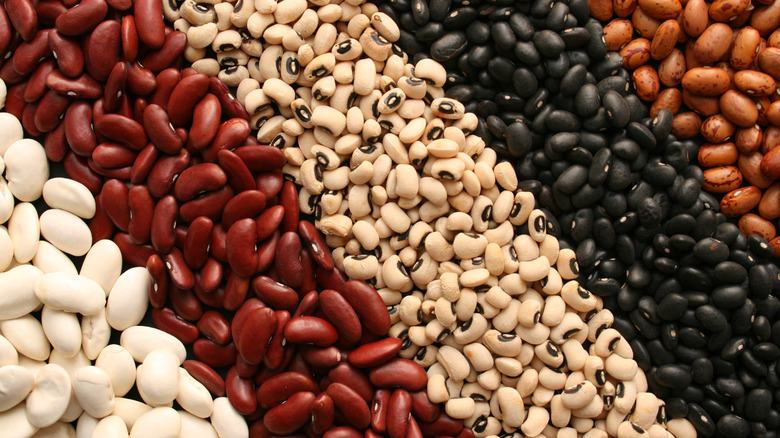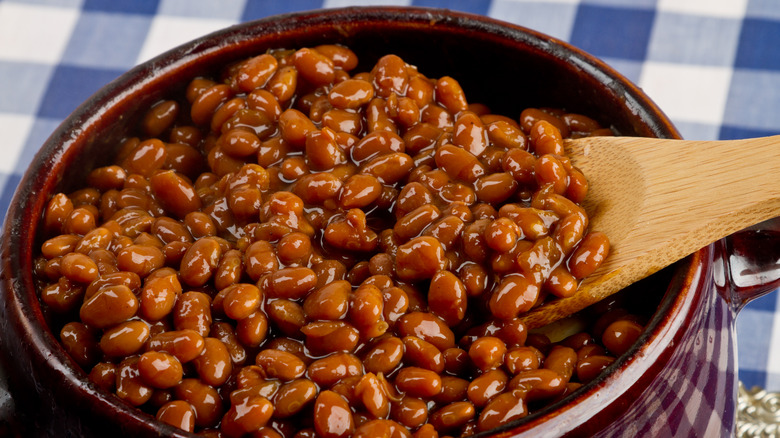Why Americans Seem To Eat Fewer Beans Than The Rest Of The World
Despite being a good source of dietary fiber, B vitamins, protein, and many other nutrients, beans have a bad rap in the U.S.: It's hard to escape their gassy reputation. Consider the children's rhyme that fans of "The Simpsons" will recall Bart singing: "Beans, beans, the musical fruit, the more you eat, the more you toot." Beans contain oligosaccharides, complex sugars that aren't broken down easily in our bodies. The result is the fermentation of the sugars in our large intestines, which is the reason beans can cause gas.
While the fear of flatulence and discomfort is obviously one reason Americans eat fewer beans than people in other countries, there's another reason that is linked to status. Because beans are inexpensive, they're often associated with poverty. Many consider them a cheap source of food that people eat when they can't afford more expensive proteins. And for many Americans, the idea of soaking and cooking dried beans makes them seem too labor-intensive. While tins of beans are more convenient, many look down on them as an uninspiring canned good taking up pantry space. But it's time for Americans to overcome the stigma associated with beans and embrace all that they have to offer.
Beans are a great protein alternative
Americans only eat about 7.5 pounds of beans per year, which is about half of what they eat in Europe, and a tiny fraction of the more than 120 pounds per capita consumed by those in Rwanda, Kenya, Burundi, and other places in which beans are the most important protein. More and more people in the U.S. are cutting back on meat and other animal products once they realize the climate effects of raising animals to eat. As a result, there's a global push toward realizing the potential of the tiny but mighty legume.
According to Our World in Data, livestock takes up 77% of global farming land, but only produces 18% of the world's calories and 37% of the protein. Plants such as beans are able to produce about twice the protein with around 1/3 of the land. The message is clear: We can use less land and get more protein if we turn our attention to planting beans, lentils, and peas.
When people in the U.S. think of bean recipes, they might get stuck on chili and baked beans. Both are delicious but barely make a dent in the number of ways to eat beans. There are hundreds of different types of beans and ways to cook them that go far beyond simply opening a can and dumping it in a pot. And if you're really concerned about flatulence, Beano is a great enzyme supplement to take before your meal.

